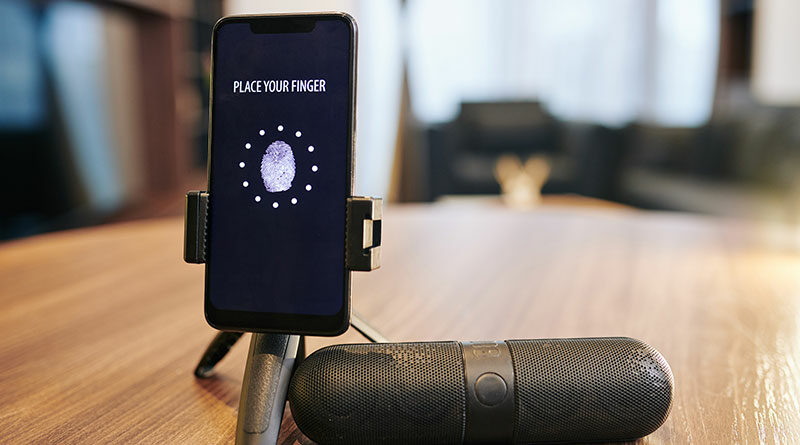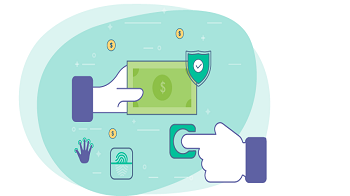Are Mobile Payments Headed Towards Biometrics and the Cloud?
(This post is updated on 24th May, 2017)
The global world of retail payments is rapidly advancing technologically, giving rise to many future possibilities to authenticate transactions and more efficiently allowing the banking industry to securely attract and connect with customers. It is now possible for an individual to make payments on the move via mobile devices, enjoy access to multiple payment methods and currency options, and feel secure in the knowledge that their sensitive data is protected due to new sophisticated technologies like and mobile biometrics, which were developed to combat fraudulent activity.
How are biometric technology and the cloud facilitating more secure mobile payments?
Biometric technology has been used for decades as a reliable and accurate individual identification tool using behavioral and physiological traits for personal identification. Two people can’t have the same unique biometrics, even identical twins.
Proven as a reliable and accurate identification platform for many years, biometrics is already used in many different capacities by government and law enforcement agencies. A recent study also says that mobile payments need biometrics because it provides the best security protection, is extremely easy to use, and is very cost effective.
Each day, the application of biometrics for identification grows and spreads across different markets such as and workforce management. Visa recently published that passwords may soon become obsolete and biometrics is going to be the next frontier of mobile payments.
Biometric technology adoption in the mobile payment industry is growing too, especially after the launch of smartphones and smart mobile devices, many of which are now equipped with built-in biometric fingerprint sensors and cameras capable of taking high resolution images. Recently, MasterCard launched its ‘selfie pay’ biometric authentication app in Europe.
Mobile biometrics is a technology used to measure and analyze biometric characteristics to authenticate individuals by using mobile devices like smartphones and tablets and the most common biometrics used for these devices are fingerprints, voice impressions, and facial recognition.
Since the retail industry is already using mobile biometric payment methods for transaction authentication, widespread adoption in the financial service industry is inevitably not far behind to leverage the utility of biometrics in banking. More cloud based mobile biometric identification technology is now available to assist in advancing the pace of using a mobile device for payments in the banking industry.
The global explosion of mobile payments will drive the need to have a more secure authentication system, and an alternative to traditional authentication will be cloud based mobile biometrics. Biometrics Research Group, Inc. expects that worldwide mobile payment transactions will reach $250 billion in 2014, reaching $750 billion in annual transactions with more than 700 million users by 2020. Below are some recent trends that show that the mobile payments industry is on a path to implement mobile biometrics and the cloud:
- Biometric mobile payments trends in the retail industry: With the launch of Apple’s latest fingerprint based mobile payment system Apple Pay, the use of biometric enabled mobile payments is likely to increase in the coming years. Apple has created a solution that is convenient, smart, and secure. A large part of the payment ecosystem has already partnered with them to make the service available to end users. In an attempt to cash on the success of mobile biometrics, some companies have also come up with similar solutions such as Allipay Wallet from Alibaba and Samsung’s fingerprint enabled payment via PayPal.
Samsung expanded their mobile payment service to Spain, South Korea, China, Thailand, Sweden, Switzerland, UK, UAE, Hong Kong, and India. Alipay expanded their mobile payment service to the U.S, and Google is also very enthusiastic about mobile payments.
- Biometric mobile payments trends in the banking industry: The United Services Automobile Association (USAA) is the first U.S financial institution to offer mobile biometrics authentication to protect against fraud and identity theft and to enhance user experience and security with their mobile app. Experts say that biometrics will play a key role in the future of banking. Reports of mobile biometric banking in 2017 indicate:
- According to a new report, 82% say biometrics is more secure than passwords for mobile banking and payment transactions.
- 79% of US adults want more biometric authentication methods beyond fingerprint (eye, face, fingerprint, and voice) authentication to access mobile banking or payment apps.
- Samsung Galaxy S8 will reportedly use facial recognition and iris scanning to authorize payments.
What is the reason behind the rapid growth of biometrics for mobile payments?
The key reasons behind the fast growth of biometric mobile payments include:
- Fast and Accurate: Biometric technology provides a high level of identification accuracy within seconds. Biometric authentication for mobile banking or payments can be more fast and secure.
- Convenience: Another big reason why biometric technology is relevant to secure mobile payments is convenience. One can instantly prove their identity within seconds by scanning their biometrics with mobile devices like smartphones, tablets, or phablets. Unlike plastic cards, PINs and passwords, you always carry your biometrics with you and it can’t be “lost, swapped, shared, or stolen.” Biometrics can provide a convenient method of mobile payment authentication.
- Security: The most important reason behind the adoption of biometric is higher security. Law enforcement agencies, governments, and businesses already use this technology for access control, data protection, and to solve critical identity problems. Now that biometric technology is available with mobile and cloud based platforms, banks and similar industries can use mobile biometrics as a security solution.
- Cost Efficient: By implementing biometric authentication for mobile payments and cloud banking services, financial organizations can ensure cost efficient services. Biometrics can prevent bank fraud and identity theft, and this technology is a long term cost effective strategy with the potential to save billions of dollars year for the banking industry.
The Mobile Payment in 2017 and Beyond
The market for mobile payments is skyrocketing this year. A report from IHS Markit says that, 3.4 Billion smartphones are equipped to use Apple Pay, Samsung Pay and Android Pay by the end of 2017. According to a report from Juniper Research, mobile payments via fingerprint, iris scan, and “selfies” (facial recognition) will rise to nearly $2B in 2017, up from just $600 million in 2016.
Conclusion
The mobile and cloud payments industry needs to consider how to support new and emerging biometric technologies. Both regulators and industry groups must also consider that biometrics are a sensible replacement for traditional and outdated authentication methods and allow Payment Service Providers the opportunity to take advantage of this new technology for customer authentication. Due to the fact that mobile payments and cloud based adoption for the banking industry is rising, mobile biometrics technology can help the industry to more effectively secure mobile device transactions through the cloud which will bring convenience to customers. Adoption of mobile biometrics and cloud based identification can prevent banking fraud, identity theft, and prevent huge financial loses to the payment and banking industry through prevention of fraud and data breaches.













Pingback: Are Mobile Payments Headed Towards Biometrics and the Cloud? | Kenneth Carnesi